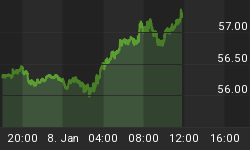Below is a chart of the Japanese Trade Weighted Index against a basket of its largest trading partners. For many years, the Yen has been seen as the safe haven currency, one that investors could use to gain interest rate carry while investing in riskier and higher yielding currencies such as the Australian Dollar and New Zealand Dollar. The March 11 Quake-Tsunami-Radiation Disaster is challenging that notion, as it has forced the Japanese Government to once again entertain the idea of intervening in financial markets to ease the economic conditions on their citizens. However, now we are at the ultimate zero bound. The overnight interest rate stands at 0.1%. The 10 year government bond yields about 1.5%. Monetary policy has been completely exhausted. Short term rates can't go lower (in theory they can go negative but we doubt that's an exercise the BOJ is willing to attempt in the country's fragile state). What is left is the option of government issuance of bonds to fund spending programs. That is, the option of fiscal programs to help Japan's economy through its worst natural disaster in modern history. However, here and now, we are at THE upper bound. The Japanese Government Debt to GDP ratio stands at a staggering 225%. The total outstanding government debt amounts to 919.15 trillion Yen - at 85 USDJPY, that amounts to 10.8 trillion US Dollars. Compare that to the U.S.' total public debt of 14.3 trillion dollars and you start to understand the relevance of the ratios - America is a much larger nation in terms of GDP and is able to sustain a much larger debt burden than Japan. Japan's current deficit sits at 7.7% of GDP. With foreigners finding the ratios a tad bit outrageous, the Japanese Government may have to resort to the BOJ to help monetize the debt and fund a greater budget deficit.
While true that Japan runs a fiat currency monetary system, and that ensures that it can never technically go bankrupt, this does not rule out a dramatic rise in yields as investors start demanding a higher risk premium. After all, the price action is a derivative of sentiment and expectations and remains the primary driver of trends. At what point do investors lose confidence in Japan's ability to manage its debt burden? As we have outlined in "The Great Misunderstanding: Workings Of Easy Monetary Policies", governments may issue bonds and their central banks may purchase those same bonds ensuring that there will always be a buyer and the state never goes bankrupt. But that is not to say that the central bank does not purchase higher yielding bonds as outside investors shun the paper.
With the idea that repatriation of insurance related funds would strengthen the yen grossly overstated, a weakening Yen against all currencies has been the appropriate response to such a disaster. Higher import needs for energy and oil, and lowering of exports with the likes of companies such as Toyota, Nissan and other major Japanese producers - the fish market for one - suffering greatly due to the quake, coupled with a concerted effort by international central banks to intervene in the currency (to lower one's currency is more effective than strengthening it) then we have the main fundamental drivers behind the lower yen.

















